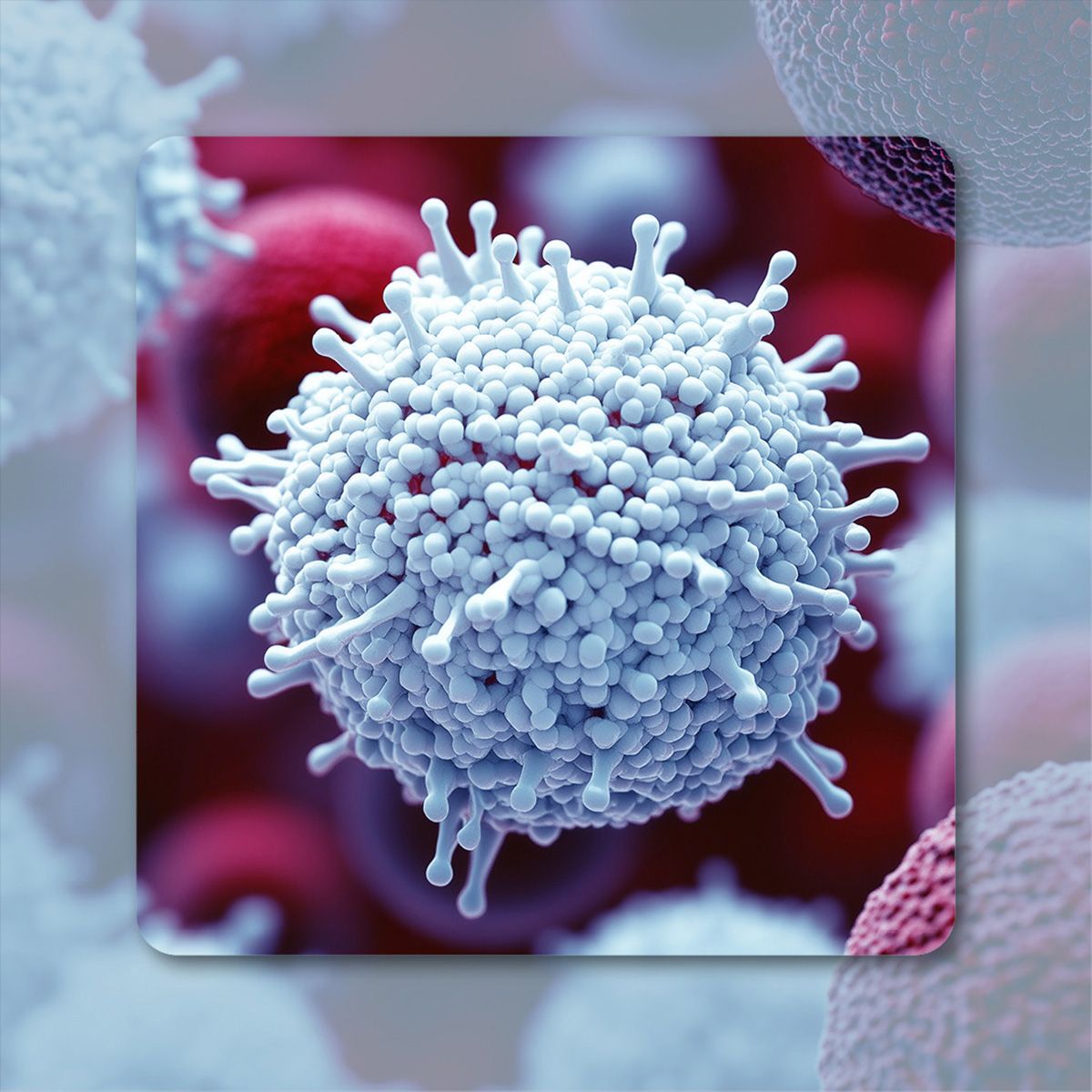News
Article
Updated Analysis From MajesTEC-1 Confirms CRS Reduction With Prophylactic Tocilizumab in Relapsed/Refractory Myeloma
Author(s):
Key Takeaways
- Prophylactic tocilizumab reduced any-grade CRS to 25.0% compared to 72.1% with teclistamab alone.
- No grade 3 CRS events were reported in the prophylactic tocilizumab cohort.
Updated Analysis from Phase 1/2 MajesTEC-1 trial support the use of prophylactic tocilizumab to reduce the risk of cytokine release syndrome associated with outpatient administration of teclistamab.
Niels W.C.J van de Donk, MD, PhD

An updated analysis from the phase 1/2 MajesTEC-1 trial (NCT03145181; NCT04557098) presented at the 2024 ASCO Annual Meeting revealed that the addition of prophylactic tocilizumab (Actemra) to treatment with teclistamab-cqvy (Tecvayli) lowered the frequency of cytokine release syndrome (CRS) vs teclistamab alone in patients with relapsed/refractory multiple myeloma.
Any-grade CRS occurred in 25.0% of patients in the prophylactic tocilizumab cohort compared with 72.1% of those who received teclistamab without tocilizumab. Grade 1 and 2 CRS affected 8.3% and 16.7% of patients, respectively, in the prophylactic treatment arm; investigators reported no grade 3 events. The median time to CRS onset in this cohort was 2 days (range, 1-3), and events lasted for a median of 2 days (range, 2-4). Additionally, all instances of CRS were eventually resolved.
The median blood marrow plasma cell (BMPC) concentration was 8.0% (range, 0%-80%) in those without CRS, 19% (range, 8%-30%) in those with grade 1 CRS, and 62.5% (range, 30%-80%) in those with grade 2 events across the prophylactic treatment group. Additionally, most patients in each respective group had stage I disease per the International Staging System assessment (72.2% vs 50.0% vs 50.0%). Although no disease characteristic appeared to correlate with CRS in this cohort, investigators noted that a small sample size may preclude clinically meaningful conclusions.
Any-grade and grade 3/4 infections occurred in 79.2% and 25.0% of patients in the prophylactic treatment group, respectively. Other common any-grade and high-grade events in this group included neutropenia (62.5% vs 62.5%), anemia (58.3% vs 25.0%), and thrombocytopenia (50.0% vs 25.0%). Data showed 1 instance of grade 5 pulmonary embolism at 20 days following the final dose of teclistamab.
“With longer follow-up, there are no new safety signals or impact on response to teclistamab, and further data are needed to inform potential risk factors for higher-grade CRS,” lead study author Niels W.C.J van de Donk, MD, PhD, a professor in Hematology at the Amsterdam University Medical Center in Amsterdam, Netherlands, said in the presentation.
“Prophylactic tocilizumab may be considered to mitigate the risk of CRS for outpatient dosing of teclistamab.”
Findings from this presentation pertained to a cohort of 24 patients in the MajesTEC-1 trial after a median follow-up of 8.1 months after treatment with prophylactic tocilizumab. In this cohort, patients received teclistamab at 1.5 mg/kg every week or as a comparable fixed dose following a single dose of tocilizumab and step-up dosing. Patients received tocilizumab at 8 mg/kg intravenously within 4 hours of the initial teclistamab step-up dose.
Patients were also eligible to receive premedication with dexamethasone, acetaminophen (Tylenol), and diphenhydramine (Benadryl) during step-up dosing of teclistamab. Investigators hospitalized patients for 48 hours following each step-up dose and after the first study treatment dose.
The median patient age in the prophylactic tocilizumab cohort was 72 years. Additionally, most patients were male (58.3%), White (79.2%), and had an ECOG performance status of 0 (54.2%). Of note, 20.8% of patients had 1 or more extramedullary plasmacytomas, and 20.8% had BMPC concentrations of 60% or higher. Disease characteristics in this prophylactic treatment cohort were generally comparable with those reported among patients enrolled on the MajesTEC-1 trial overall.
Responses across the prophylactic treatment cohort appeared to be similar to those reported across the overall MajesTEC-1 trial population.2 The objective response rate (ORR) was 72.7% with prophylactic tocilizumab vs 63.0% with teclistamab only. In each respective group, the complete response (CR) or better rate was 18.2% vs 46.1%, the very good partial response (VGPR) rate was 40.9% vs 13.3%, and the PR rate was 13.6% vs 3.6%. Investigators hypothesized that the relatively lower CR or better rate in the prophylactic treatment group may be attributable to a limited number of available bone marrow samples to confirm the CR and follow-up duration.
Interleukin-6 (IL-6) induction in the prophylactic treatment group was typically comparable with that in the general MajesTEC-1 population, although the magnitude of IL-6 induction was more pronounced in the prophylactic treatment group. Additionally, the duration of IL-6 signaling blockade lasted across the period of teclistamab step-up dosing.
References
- van de Donk NWCJ, Garfall AL, Benboubker L, et al. Longer-term follow-up of patients (pts) receiving prophylactic tocilizumab (toci) for the reduction of cytokine release syndrome (CRS) in the phase 1/2 MajesTEC-1 study of teclistamab in relapsed/refractory multiple myeloma (RRMM). J Clin Oncol. 2024;42(suppl 16):7517. doi:10.1200/JCO.2024.42.16_suppl.7517
- Garfall AL, Nooka AK, van de Donk NWCJ, et al. Long-term follow-up from the phase 1/2 MajesTEC-1 trial of teclistamab in patients with relapsed/refractory multiple myeloma. J Clin Oncol. 2024;42(suppl 16):7540. doi:10.1200/JCO.2024.42.16_suppl.7540







%20u.jpg?fit=crop&auto=format)

